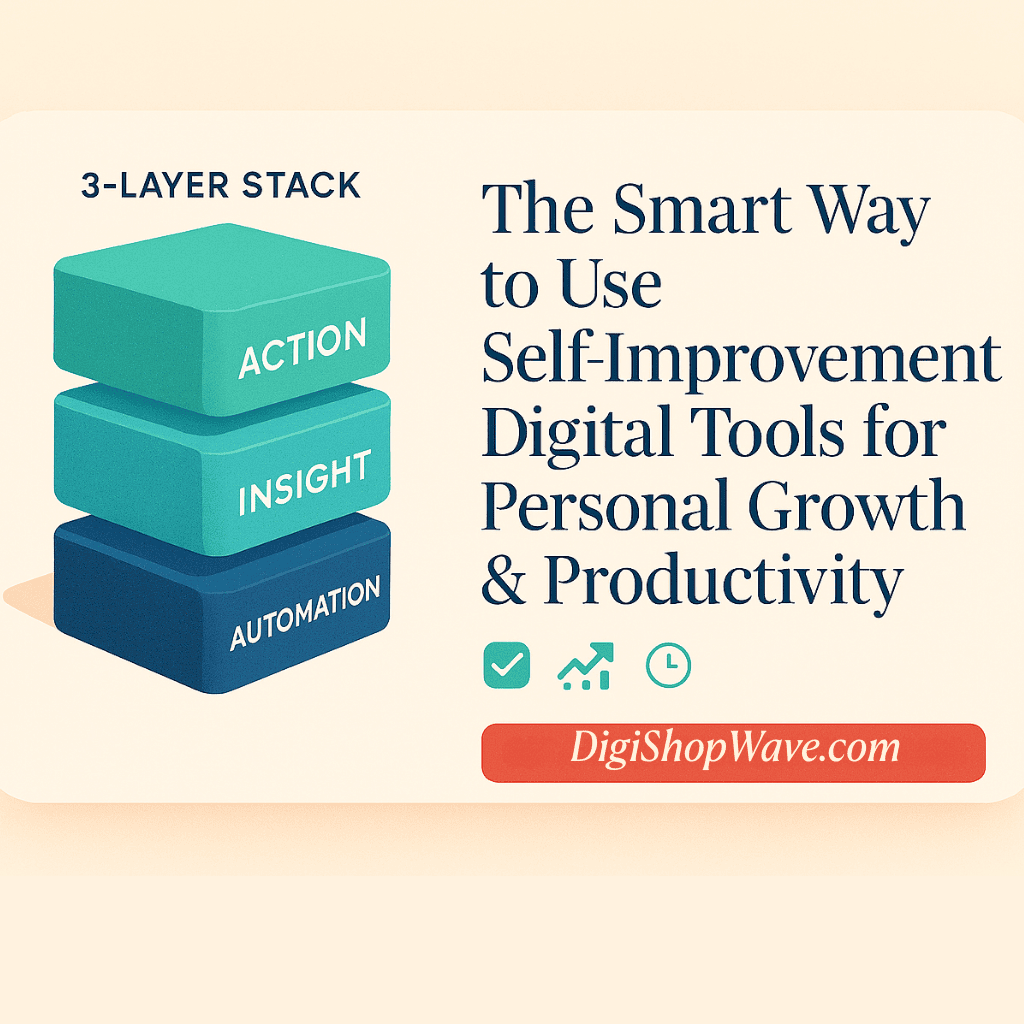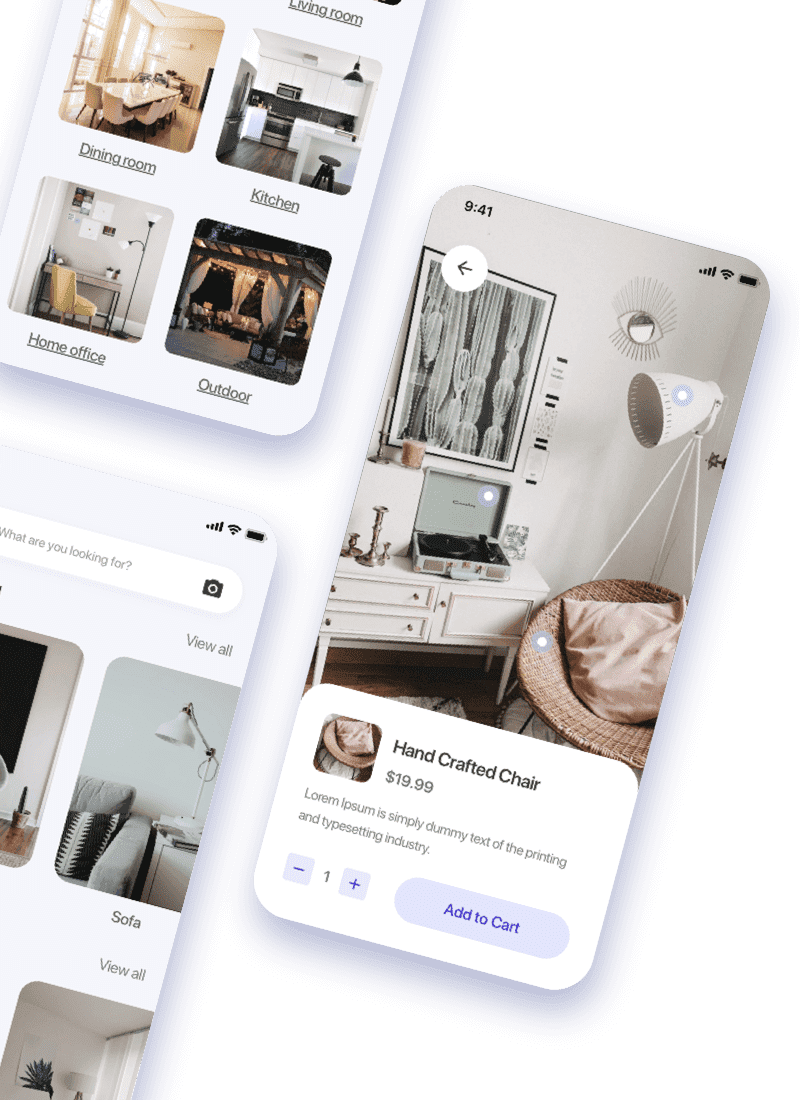In our app-saturated world, it’s easy to download five new self-improvement apps and still feel stuck. Research indicates that approximately 70% of users abandon health and wellness apps within the first few months. The problem isn’t necessarily the apps themselves, but how we use them. When chosen and used wisely, digital tools can save significant time and reduce stress – but overwhelmed users often bounce from tool to tool without a clear strategy. This guide will show you how to align your tools to your real goals, so that apps become catalysts for growth (not clutter).
Why Tools Often Let You Down
Even great apps can fail if misapplied. Many people pile on multiple apps (“tool fatigue”), only to suffer decision paralysis and neglect all of them. Studies find that most app abandonment happens early – for example, one review found a median of 70% of users stopped using health/wellness apps within 100 days of download.
Why? Common reasons include confusing interfaces, irrelevant features, or just lost motivation.
Instead of hoarding apps, focus on matching tools to purpose. Digital tools work best when they amplify habits you’re already inclined to keep. As one research group notes, the value of technology depends on how it’s used – “when [tools] are correctly used… they contribute to saving a significant amount of time”. In other words, don’t treat an app like a magic pill. Be strategic: pick a few key tools that directly address your goals and weave them into your routine.

Part 1: The Mindset Reset
Kill the “Magic Pill” Myth
No app will change your life on its own. Forming new habits is fundamentally a brain-training exercise: it *requires building new neural pathways through repetition. A UCLA health report explains that forming a habit literally “involves the creation of new neural pathways. You are rewiring your brain,” which takes time and consistent effort. In short, the tool is only the *scalpel – you’re the surgeon.
Actionable Tip:
Audit your current habits before downloading more tools. Choose one goal (e.g., meditate daily, log exercise, focus on a project) and ask which app truly addresses that pain point. If a new tool doesn’t solve a specific problem practically, don’t bother. Keep it simple: adopt one new habit at a time and let it take root. This way, you harness the app’s power instead of being overwhelmed by it.
Chain Your Actions (Habit Stacking)
Once you pick a target habit, link it to something you already do. Stanford behavior experts advocate “habit stacking” or “anchoring” new routines to existing ones. For example:
- After you start the coffee maker in the morning, sit down and spend 5 minutes with a meditation app.
- When you plug in your laptop at work, immediately launch a focus-timer app like Pomodoro or Forest.
This “Tool Tetris” approach turns one cue into multiple positive actions. As a Stanford behavior lab notes, tying a new habit to an old one (for instance, “After I make coffee, I meditate”) dramatically improves consistency. Over time, your brain learns the chain of actions together, making the new behavior as automatic as the old one.
⚙ Part 2: Building Your Custom Tool Stack
Match tools to each goal, and build your stack in layers. Below are examples of categories and tool types:
Focus & Flow:
Use deep-work timers and blockers rather than generic to-do lists. For example, a Pomodoro timer or a focus app like Reclaim.ai can auto-schedule distraction-free blocks. Research shows Pomodoro-style timers “improve focus” and “minimize distractions,” helping prevent burnout. In practice, one might use Freedom to block websites, run a Pomodoro timer (say, Focus\@Will), then log accomplishments.

Habit Building:
Opt for trigger-based trackers instead of a static checklist. A habit app that uses cues or location (e.g., “start run when I arrive home”) can reinforce routines. The key is actionable prompts, not just empty streaks.
Emotional Fitness:
Mood-tracking or journaling apps (especially those with prompts or AI insights) can bolster well-being. Numerous reviews find that mental health apps can provide “timely support,” reduce barriers like stigma, and improve therapy outcomes. Just be selective: privacy and clinical validity vary widely. Focus on apps that encourage concrete actions (mindfulness, writing, breathing) and use reminders to practice them.
Knowledge Growth:
Leverage spaced-repetition learning tools (flashcards) instead of passive reading. Academic studies repeatedly confirm that spaced repetition dramatically boosts long-term learning and retention. Tools like Anki or RemNote automate this. For example, importing your notes into RemNote will auto-generate flashcards, turning study time into lasting memory gains.
The 3-Layer Stack Method:
Think in tiers for maximum effect:
- Base Layer (Automation): Automate routine data flows. For instance, use Zapier or IFTTT to log your workouts or tasks automatically (e.g., when you finish a workout on your smartwatch, Zapier logs it to Google Sheets). This removes friction so you don’t forget.
- Mid Layer (Insight): Use analytics tools to spot patterns. Apps like Exist.io or built-in dashboards can analyze your sleep vs. productivity, or habit streaks vs. mood. Let the data guide you to tweak your habits.
- Top Layer (Action): Have tools that actively recommend next steps. For example, a smart calendar can auto-reschedule meetings away from your focus blocks. If your focus time dips one week, a tool like Reclaim.ai will rearrange your schedule to protect it.

Pro Tip:
Connect these layers. Use integrations (Zapier, IFTTT, or built-in sync) so your tools talk to each other (e.g. “If I finish a meditation session [Headspace], then add it to my calendar”). Entrepreneur Jason Fried famously credits his zero-notification stack (RescueTime + FocusMate + Serene) for a 142% productivity jump – proving the power of an integrated system.
Part 3: Hidden Traps (And How to Escape)
Data Without Direction.
It’s tempting to measure everything – steps, screen time, heart rate, calorie intake. But research and common sense say: less is more. For instance, experts recommend tracking only a few key metrics that truly matter to your goals. Each extra stat adds noise and effort.
Escape Plan:
Focus on 2–3 metrics tied directly to your goal (e.g., hours of deep work per day, days meditated per week). Use apps that let you cut old data easily if needed. This keeps you agile and prevents you from drowning in charts.
Review Ritual Burnout.
A weekly review shouldn’t feel like filing taxes. Lengthy bullet journaling or spreadsheets can kill motivation.
Escape Plan:
Try quick “micro-reviews.” For example, a daily 1–3 minute voice note about your day (recorded on your phone and tagged “#insight”) can capture reflections without heavy typing. Some planning tools (like Sunsama or Notion templates) can auto-generate a summary of what you did. The key is making reviews fast and useful – celebrate wins and adjust goals on the fly. (As one productivity coach puts it, brief reflection “multiplies growth” by turning experience into insight.)
Distraction Creep and Over-Reliance.
Ironically, an app that’s supposed to help you focus can become another distraction (constant alerts, adding tasks that never get done). Also, don’t lose your discipline. Tools should aid habits, not replace your willpower. If all your motivation comes from an app ping, you might struggle when that ping is gone.
Escape Plan:
Use “focus mode” features (turn off non-essential notifications, or use Pomodoro blocks that lock your screen). Schedule phone-free times or enable do-not-disturb when working. And cultivate non-digital habits (e.g. put your workout clothes out the night before, or do a quick physical checklist) so you aren’t 100% gadget-dependent.

Part 4: Maintaining Your Tool Ecosystem
A good tool system isn’t “set and forget.” Periodic upkeep keeps it fresh:
Monthly: Audit your app usage (most phones show battery or screen time by app). Delete any you haven’t used in weeks.
- Quarterly: Experiment with one new app or feature. Sites like BetaList aggregate early-stage tools you can try before they go mainstream.
- Yearly: Revoke old permissions (look up “Permission Manager” on your phone) and back up your data (tools like Portabl can export across apps). Starting each year with a clean slate prevents your digital life from stagnating.
Digital Detox: Finally, schedule real breaks from tech. Research shows that unplugging can restore focus, improve sleep, and reduce stress. Even a weekend or a week without habit apps can reset your cravings and clarify which tools you truly missed. When you return, reinstall only the ones you’ll actively use and set new intentions.
“Tools don’t change lives—rituals do,” is a golden rule to remember. Your apps are just the instruments; you’re the person playing them. Make those routines count.
Your Smart Implementation Plan
- Purge: Uninstall at least 3 self-improvement apps you rarely use right now. Fewer choices free mental space.
- Pilot: Choose one core tool aligned to your top goal and commit to it for 3 weeks. If it doesn’t make life measurably better, reassess or switch.
- Automate: Set up one integration to reduce friction (e.g., “If meditation is completed in Headspace, log it in Google Calendar”). Explore Zapier or IFTTT recipes for your apps.
- Evolve: Join communities (Reddit, Slack groups, or forums) around productivity and self-growth. Peer tips are gold. For new ideas, browse BetaList or Product Hunt for vetted, cutting-edge tools.
Finally, share your journey: tell a friend what app helped you, or post a progress update. Accountability multiplies motivation. If these strategies resonate with you, consider joining our 7-day “Smart Tool Challenge” – a free email series packed with quick tips to optimize your tool stack.
By choosing tools deliberately, integrating them into real routines, and pruning what doesn’t work, you’ll cut through the digital noise. Turn on your best growth habits – with technology as your ally, the personal development you seek is within reach.
Citations: According to an industry review, the global personal development market was already about \$48.4 billion in 2024. When used correctly, technology can save a “significant amount of time” and boost efficiency. Yet app overload leads to high drop-off: roughly 70% of users stop using lifestyle or health apps in a few months.
Habit research confirms that change comes from repetition and strategy: forming new routines rewires the brain, especially if you anchor them to existing habits. For instance, using focused work intervals (Pomodoros) can “improve focus” and prevent burnout, while spaced-repetition study tools greatly increase retention.
At the same time, mental wellness apps can offer timely support and reduce barriers to care, though they also face engagement and privacy challenges (another reminder to choose wisely). Finally, simplicity wins: track only a few key metrics and give your mind regular breaks.
By sticking to these science-backed principles, you’ll transform chaos into clarity and finally unlock the productivity and growth you’ve been chasing. Good luck!
For more suggestions, sign up for our newsletter






